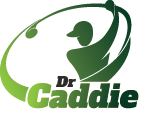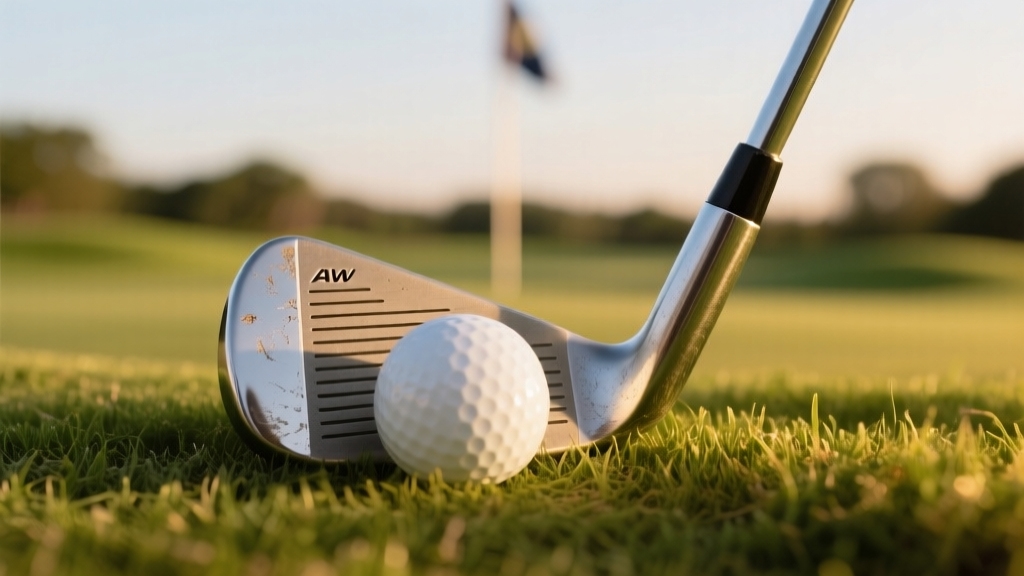An AW iron, or approach wedge, fills the distance gap between your pitching and sand wedges, typically featuring a loft between 48° and 52°. It’s designed for precise approach shots from about 80 to 120 yards, offering higher launch and increased spin to help the ball stop quickly on greens.
Its moderate bounce and specialized sole aid versatility across varied lies. If you want to improve your short game control and understand the nuances of wedge fitting, exploring the details can be rewarding.
- Key Takeaways
- Definition and Purpose of the AW Iron
- Loft and Distance Characteristics of the AW Iron
- Role of the AW Iron Within a Golf Set
- Physical Design Features of the AW Iron
- Naming and Terminology Variations for AW Irons
- Role of the AW Iron Within a Golf Set
- How the AW Iron Enhances Short Game Performance?
- Choosing the Right AW Iron for Your Golf Bag
- Frequently Asked Questions
- Choosing the Right AW Iron for Maximum Performance
Key Takeaways
- An AW iron, or approach wedge, fills the distance gap between pitching and sand wedges, typically with a loft around 50–52°.
- It is designed for approach shots from 80 to 120 yards, providing higher ball flight and better control on greens.
- AW irons have moderate bounce and a wedge-shaped clubhead for versatility on various lies and turf conditions.
- Also called gap, attack, or utility wedges, AW irons help improve short game precision and scoring potential.
- Many players customize AW lofts and shaft specs for optimal launch, spin, and consistency tailored to their swing.
Definition and Purpose of the AW Iron
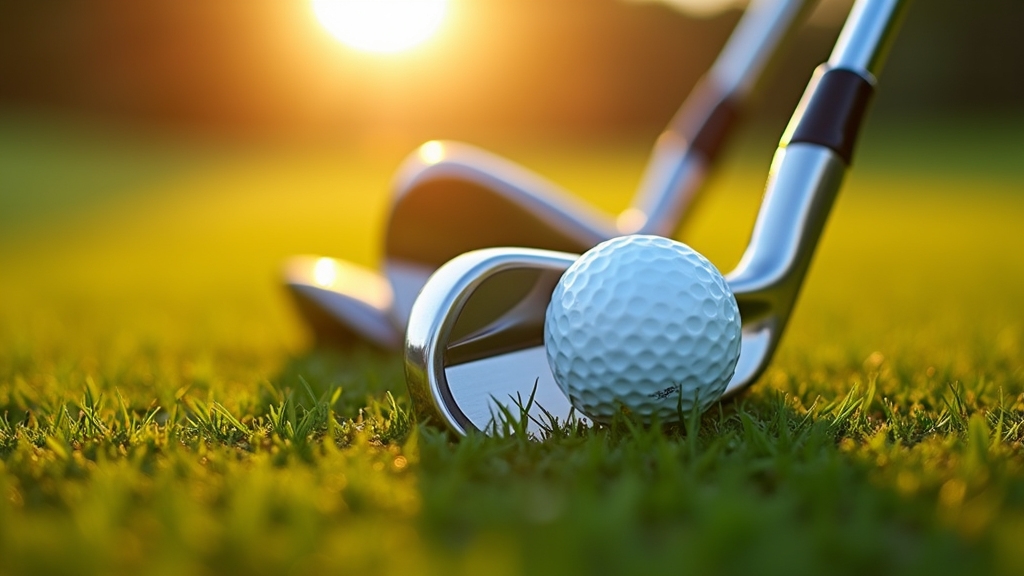
The AW, or Approach Wedge, fills the loft and distance gap between your pitching wedge (PW) and sand wedge (SW). Proper bag organization helps ensure you can quickly select your AW when needed. Often labeled “A” or “AW,” it’s fundamentally a “gap wedge,” positioned around 50–54 degrees loft, providing intermediate distance control.
Known as the gap wedge, the AW offers 50–54 degrees of loft for precise intermediate distances.
This club is designed for approach shots from 90 to 120 yards, where you need more accuracy and spin than a PW offers but less loft than a SW requires. Its smaller bounce angle compared to sand wedges helps you strike cleanly from various lies.
The AW’s balanced design combines iron-like control with wedge-like precision, making it a versatile tool for managing your approach shots and maintaining consistent distance progression within your iron and wedge setup. It is particularly useful for approach shots from 50 to 80 yards, on fairway, rough, or between the two.
Loft and Distance Characteristics of the AW Iron
Understanding the specific loft and distance attributes of the AW iron helps you optimize its role between your pitching wedge and sand wedge. Typically, the AW features a loft between 48 and 52 degrees, often around 51-52 degrees. This positions it between the pitching wedge’s 44-48 degrees and the sand wedge’s 54-58 degrees.
Choosing the right club for these distances is essential for consistent shot control and accuracy, much like selecting the proper golf grip. This loft generates a higher launch angle and increased backspin, producing shots with a trajectory that’s steeper and shorter in distance compared to mid-irons.
You can expect carry distances generally ranging from 100 to 120 yards, filling the 10-15 yard gap between pitching and sand wedges. The AW’s loft enhances control and shot-stopping ability on greens, making it a precise tool for approach shots needing moderate height and accuracy.
Additionally, slight adjustments to the AW’s loft can be made by bending the hosel, typically within a 2° range, to better customize shot height and distance loft adjustment.
Role of the AW Iron Within a Golf Set
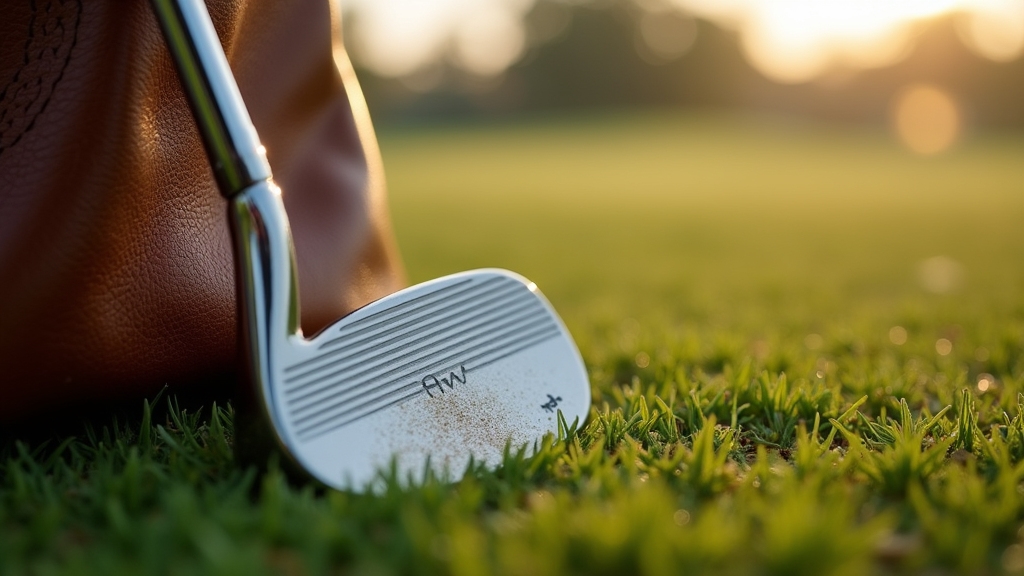
Although often overlooked, the AW iron plays a critical role within your golf set by bridging the loft and distance gap between the pitching wedge and sand wedge. With an intermediate loft around 50° to 52°, it fills the distance void that pitching wedges can’t cover effectively, ensuring more consistent yardage increments.
This precision lets you better control approach shots from roughly 90 to 110 yards, optimizing scoring chances near the green by taking advantage of the AW’s spin control and shot shaping capabilities. Mid- to high-handicap players especially benefit, as the AW integrates seamlessly into game-improvement sets, reducing redundant lofts and maximizing the allowed 14 clubs.
Its versatility supports varied shot trajectories and spin control, making it essential for both full swings and partial shots. In addition, the AW iron is often included in sets from major brands like TaylorMade and Callaway, reflecting its importance across different skill levels and club designs major brands.
Physical Design Features of the AW Iron
The AW iron is designed with a clubhead that has a moderate bounce angle. This helps improve turf interaction and makes it versatile for different lies. You’ll also notice that the sole is specially shaped to enhance performance.
Typically, the loft of this iron is around 50 degrees, which is pretty standard. Plus, the shaft length is optimized to give you better control and precision, especially between pitching and sand wedges. The AW iron is often categorized as a gap wedge, filling the loft range between the pitching and sand wedges to provide better distance control and versatility wedge classification.
All these design elements come together to make the AW iron forgiving on various lies. This means you can expect consistent performance on your approach shots, no matter the situation. Isn’t that what every golfer wants? The effectiveness of the AW iron can also be influenced by the player’s handicap, which adjusts scoring to reflect actual performance.
Clubhead Shape and Bounce
The AW iron features a wedge-like clubhead with a slightly larger profile than a sand wedge, balancing precision and forgiveness. Its cavity back design redistributes weight to the perimeter, enhancing stability and off-center hit forgiveness. Blade-style options offer control for skilled players.
Understanding the importance of fair play in equipment design helps ensure consistent performance across different skill levels. The clubhead’s sole width is wider than a pitching wedge but narrower than a sand wedge, aiding versatility and turf interaction across various lies.
Bounce angles typically range from 6 to 12 degrees, moderating turf engagement to prevent excessive digging. The AW iron is typically part of a set that includes 4-PW irons with consistent length, swingweight, and flex, ensuring uniformity in performance. This moderate bounce improves contact on tight lies and light rough, adapting well to different turf conditions and shot types.
Loft and Shaft Specifications
The clubhead’s shape and bounce set the foundation for the AW iron’s versatility. Its loft and shaft specifications define its performance characteristics in flight and control. Choosing clubs with the right specifications ensures optimal comfort and performance during play.
Typically, the AW loft ranges from 48° to 51°, fitting neatly between the pitching and sand wedges. Its shaft length, generally 35 to 36 inches, balances distance and precision. The AW iron’s loft also helps fill the important loft gap between the pitching wedge and sand wedge, ensuring consistent yardage progression.
Shaft flex and material, steel or graphite, further tailor shot trajectory and feel. This accommodates various swing speeds.
| Specification | Typical Range | Impact on Play |
|---|---|---|
| Loft | 48°–51° | Controls trajectory height/spin |
| Shaft Length | 35″–36″ | Balances control and carry |
| Shaft Flex | Regular, Stiff | Matches swing speed for accuracy |
| Shaft Material | Steel, Graphite | Influences weight and vibration |
| Loft Gap Progression | 4°–5° over PW | Maintains yardage consistency |
Turf Interaction and Forgiveness
What makes an AW iron excel in turf interaction and forgiveness lies primarily in its physical design features. Its wider sole promotes smoother turf contact, reducing fat shots by helping the club glide through grass rather than digging in. Sole camber and relief enhance this by allowing the club to pivot cleanly, maintaining consistent turf contact across various lies.
This design also supports improved balance and mobility, which is especially beneficial for senior golfers. The leading edge’s subtle rounding combined with moderate bounce prevents excessive turf resistance and digging, improving versatility on different surfaces. This bounce angle is particularly helpful for preventing the club from digging too deeply in soft turf conditions.
Multi-material construction shifts weight lower and deeper, raising the sole off the ground to minimize turf interaction issues while increasing forgiveness on off-center strikes. Together, these design elements optimize launch, consistency, and control, enabling you to strike the ball cleanly and recover from imperfect swings with greater reliability.
Naming and Terminology Variations for AW Irons
You’ll notice that the AW iron is often referred to as either an Approach Wedge or an Attack Wedge, depending on who makes it. Some brands even like to call it a Gap Wedge (GW), which can really mix things up since the loft angles and naming conventions aren’t always the same.
The AW typically fills the loft gap between the pitching wedge and sand wedge, usually around 52° loft. Understanding these differences is key! It’ll help you choose the right club to effectively bridge the gap between your pitching and sand wedges. Selecting the appropriate club also involves considering grip fitting to enhance control and consistency during shots.
Common AW Names
You’ll find AW commonly stands for “Approach Wedge,” but it also appears as Attack Wedge, Utility Wedge (U or UW), or Gap Wedge (GW). Many golfers benefit from understanding the grip stability that different clubs provide, influencing how they choose wedges for control around the greens.
These names reflect either the club’s loft, usually 50°–52°, or its function bridging the pitching and sand wedges. Some brands prefer loft numbers over letters, emphasizing precision.
| Name Variant | Emphasis |
|---|---|
| AW / Approach Wedge | Approach shots, loft gap |
| GW / Gap Wedge | Distance gapping between PW & SW |
| U / Utility Wedge | Versatility beyond approach |
This terminology variance helps you select wedges that fit your game style and set composition efficiently. The AW or Gap Wedge typically has a loft between 48 to 51 degrees, filling the gap between the pitching wedge and sand wedge in most iron sets.
Manufacturer Label Differences
Understanding the variety of names for AW irons naturally leads to examining how manufacturers label these clubs differently. While AW commonly stands for “Approach Wedge,” some brands call it “Attack Wedge” or use alternative terms like Gap Wedge (GW) or Utility Wedge (U/UW). These wedges are part of the iron set and are specifically designed to provide precision and control for approach shots.
Proper maintenance, including grip texture care, can improve handling and consistency with these clubs. For example, TaylorMade and Callaway prefer AW, Cobra and Mizuno use GW, and Ping opts for U or UW to highlight versatility. Loft degrees, typically between 48° and 52°, are often stamped instead of letters to provide precise specifications.
These variations reflect marketing strategies and target player profiles, with game-improvement irons labeling AW or GW, while forged sets may omit it entirely. Despite differing names, all serve to bridge the distance gap between Pitching and Sand Wedges, ensuring consistent performance across brands.
Role of the AW Iron Within a Golf Set
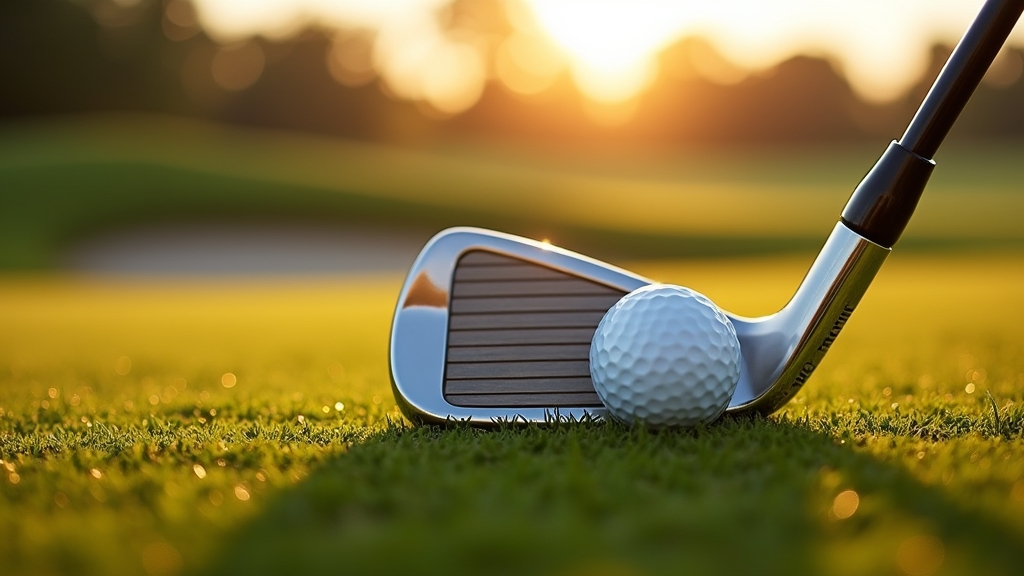
Because it bridges the distance gap between pitching and sand wedges, the AW iron becomes essential for approach shots requiring precise distance control and trajectory. You’ll use it for shots ranging from 80 to 120 yards where a pitching wedge overshoots and a sand wedge falls short.
It delivers a higher ball flight than mid-irons, enabling quick stops on greens without excessive roll. On tight lies, its moderate loft and blade design help you achieve clean contact, reducing turf digging. The AW iron also excels for punch shots to navigate wind or obstacles, providing controlled trajectory and spin.
When accuracy outweighs power, such as second shots on par-4s or layups on longer holes, this club’s versatility ensures consistent, reliable performance across varied course conditions. Most golfers carry a set including 5-7 irons and a pitching wedge, making the AW a valuable addition for short game precision.
How the AW Iron Enhances Short Game Performance?
Though often overlooked, the AW iron plays a crucial role in refining your short game by delivering superior control over trajectory and distance between the pitching and sand wedges. Its loft, typically between 48° and 52°, bridges the gap in elevation and spin, allowing you to execute shots with consistent flight and stopping power from 80 to 110 yards.
This versatility enhances your ability to approach the green precisely, reduces the need for frequent club changes, and improves shot consistency. Enables controlled trajectory and backspin for more accurate proximity to the hole. Offers greater forgiveness on mis-hits compared to pitching wedges, minimizing scoring errors.
Provides smooth turf interaction for reliable contact and repeatable swing mechanics. Using the AW iron strategically elevates your short game performance and scoring potential, especially when paired with proper setup and tempo.
Choosing the Right AW Iron for Your Golf Bag
Selecting the right AW iron for your golf bag requires careful attention to its loft, design, and compatibility with your existing clubs. You’ll want an AW, typically lofted between 50° and 52°, that fills the gap between your pitching wedge and sand wedge to ensure consistent distance gapping.
Consider your skill level: cavity-back AW irons suit higher handicaps with forgiveness and wider soles, while forged or blade-style wedges fit lower handicaps demanding precision and feel. Also, match shaft flex to your swing speed—regular flex for slower swings, stiff for faster.
Pay attention to shaft material; steel offers control, while graphite adds speed. If your iron set lacks an AW, select a gap wedge with appropriate loft. Consulting a club fitter helps tailor your choice to your swing mechanics and playing style, optimizing short-game performance.
Working with a professional fitter is recommended because a proper fit can significantly improve your Greens in Regulation (GIR) and scoring.
Frequently Asked Questions
Can Beginners Benefit From Using an AW Iron?
Yes, you can definitely benefit from using an AW iron as a beginner. It offers forgiveness on off-center hits and fills the yardage gap between pitching and sand wedges. This helps you manage distances more accurately.
The club’s design enhances spin control and versatility for various shot types. It allows you to develop consistency, improve your short game, and build confidence while adapting to different course conditions effectively.
How Does Weather Affect AW Iron Performance?
Weather directly impacts your AW iron’s performance. Cold temperatures stiffen your club and lower ball flight, reducing distance. Wind alters trajectory. Headwinds cut distance and increase height, while tailwinds boost carry but reduce control. Crosswinds cause lateral drift.
Moisture from rain makes grips slippery and turf softer, affecting spin and shot quality. Dry, firm ground improves consistency, while muddy or hard turf challenges your shot precision and club interaction. Adjust accordingly.
Are AW Irons Legal in Professional Tournaments?
Yes, AW irons are legal in professional tournaments just like any other standard club, fitting seamlessly into your 14-club limit. They comply with all USGA and R&A regulations on loft, length, and design, ensuring tournament conformity.
Using an AW in competition is as straightforward as selecting a pitching or sand wedge, allowing you to precisely bridge distance gaps for approach shots without risking disqualification or rule violations.
What Brands Are Known for Quality AW Irons?
You’ll find quality AW irons from brands like Mizuno, PXG, Callaway, Ping, and Srixon. Mizuno’s JPX 925 Hot Metal and PXG’s Black Ops offer advanced tech with great feel. Callaway and Ping provide forgiving models suited for various skill levels.
Srixon’s ZXi4 combines forged feel with game improvement features. These brands consistently deliver performance, forgiveness, and customization, ensuring you get reliable and high-performing AW irons for your game.
How Often Should You Replace an AW Iron?
You should replace your AW iron every 5 to 6 years with average use, or sooner if you play frequently, about every 3 to 4 years. Watch for groove wear, loss of spin, or diminished shot control. Heavy use and poor maintenance shorten lifespan.
Also, consider updating to benefit from technological advances that improve distance and forgiveness. Replacing at the right time guarantees consistent performance and maximizes your playability.
Choosing the Right AW Iron for Maximum Performance
Now that you understand the AW iron’s loft, design, and role, are you ready to add this versatile club to your set? It bridges the gap between your wedges and mid-irons, offering precise control and ideal distance for approach shots and short game finesse.
Choosing the right AW iron can enhance your performance around the green, making those critical shots more consistent and effective on the course.
